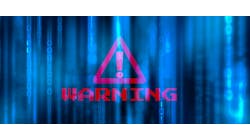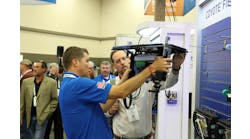Latest from Professional Development/Leadership
by: Carl and Deb Potter
(This article originally ran in the November 2010 Issue of OSP Magazine)
What you don’t know can get you hurt, and what you think you know can get you hurt as well. When it comes to safety the person who is at risk for injury must be aware of the hazard and what can be done to control the hazard and prevent injury. This is one of the three E’s of safety: Evaluation, Education, and Enforcement.
Evaluation
Evaluation is critical to creating a safe workplace and requires a consistent process. Many organizations consider job hazard analysis as the only evaluation. I recommend that an organization should be regularly checked against a behavioral benchmark. What are executives, middle managers, and functional level employees doing to create a zero-injury environment? How are employees involved in the safety process? How can safety education and training at all levels be improved?
Education
Education is meant to increase a person’s understanding of a subject. It surprises me to find organizations that repeat the same safety education and training year after year and expect improvement. It’s not common for me to find companies using the same script for training that has been used for 5 or 6 years. The effectiveness of this training has long gone by the wayside.
Learning about OSHA and keeping up to date with changes can be done by purchasing an up-to-date version of Mancomm’s 1910 OSHA book and forming study groups with employees and supervisors. Safety committee members can use this book to expand their knowledge thereby positively influencing their coworkers to create a safe workplace.
Plenty of educational books exist that can help you in getting to know safety as well. Several of my books, including ZERO!, I Am Safe!, Working Safely in a Changing Environment, etc., not to mention books by Scott Geller, Aubrey C. Daniels and others, are excellent sources of information that can raise an overall level of safety understanding in the organization, and can ultimately lead to a comfort level with enforcement.
Enforcement
Enforcement is a subject that many leaders don’t like to talk about. It’s a subject that many associate with penalties, termination, and other uncomfortable consequences. Any society, organization, or team that does not enforce expected behaviors is bound to fail due to the chaos created by those who decide not to follow the expectations.
To deal with this barrier, enforcement of safe work practices should be approached as a way to solidify behavior accepted by the organization. Creating a safe work environment doesn’t mean you have to write a new rule every time someone gets hurt, but sadly many organizations react this way.
The new year is here, and it is your choice to be involved. What will you do at your level of the organization? How much time will you use over the next several months to increase your knowledge about safety? When company leaders and employees, and bargaining unit members get to know safety, they will find that it’s possible to create a workplace where nobody gets hurt. That’s something we can all live with.
About the Author
© 2010 Carl Potter, Potter and Associates International. Carl Potter, CSP, CMC, CSP works with organizations that want to create an environment where nobody gets hurt. As an advocate for zero-injury workplaces, he is a nationally-renowned safety speaker, author, and advisor to industry. He also enjoys flying and infusing aviation safety concepts into workplace safety practices. To purchase copies of Carl and Deb Potter’s safety books, visit www.safetybooks.com.
Want to sharpen your employee hazard recognition skills? For information about safety programs, including the Hazard Recognition and Control Workshop, contact Carl at 800.259.6209, email [email protected], or www.carlpotter.com.



